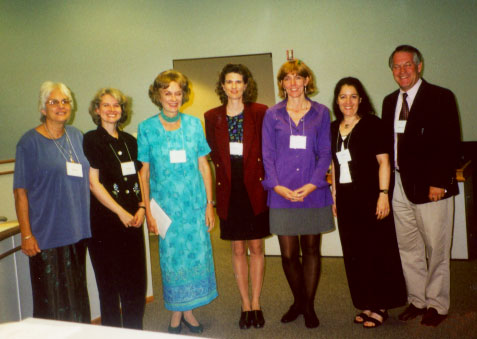| Home | Introduction | First Language Attrition | Second Language Attrition | Language Relearning | Symposia | Other Related Subfields | Researchers |
| Language Attrition Research Archive | ||
|---|---|---|
| (LARA) | ||
|
SLRF 2000 Invited Colloquium
Language Attrition: Crosslinguistic Interplay and Sociolinguistic Perspectives Organizer: Dorit Kaufman, State University of New York at Stony Brook
Program Robert Russell, Brigham Young University, Provo Utah Attrition in English native speakers' L2 production of Japanese: 10 years later Lynne Hansen, Brigham Young University, Hawaii Forgotten but not gone: Extending the savings paradigm in the recovery of lost L2 vocabulary and syntax Georgette Ioup, University of New Orleans, New Orleans Age differences in forgetting a language Dorit Kaufman, State University of New York at Stony Brook Attrition in L1: Evidence from oral and written narratives Agnes Bolonyai and Lida Dutkova-Cope East Carolina University L1 attrition of verbal morphology in bilingual children and adults Saskia Stoessel, Tufts University, Boston Multilingual social networks: A sociolinguistic perspective on first language attrition in immigrants Kamal Sridhar, State University of New York at Stony Brook Patterns of acquisition and attrition in a transplanted language: The case of Thanjavur Marathi in India Discussant: S.N. Sridhar Department of Linguistics & Center for India Studies State University of New York Stony Brook Colloquium Abstract Interest in language attrition has increased dramatically in recent years and has led to research in first and second language attrition among diverse languages and age groups. This colloquium reflects this diversity in research perspectives, languages, age groups of individuals, and divergence of communities. Robert Russell opens with a longitudinal perspective on the attrition of Japanese as a second language among adult native speakers of English. When a language is presumed forgotten it is not always gone, Lynne Hansen extends the savings paradigm from cognitive psychology to the relearning of Korean and Japanese as second languages. Her presentation examines the applicability of the savings approach to the recovery of lost lexical knowledge and the influence of word class in the retention and regaining of the second language. Children have been observed to lose language much more rapidly and completely than adults. Georgette Ioup uses the savings paradigm to investigate the impact of literacy and age differences on L1 retention of two adult siblings whose attrition began at ages 6;9 and 13;1. Attrition among children in an immigrant context is often characterized by simultaneous growth and decline in the native language. Dorit Kaufman explores the changes that occur in the native language of children in this context. Her focus is on the impact of L1 attrition on oral and written narrative production among Hebrew-English bilingual children. Agnes Bolonyai and Lida Dutkova-Cope discuss the attrition of L1 verbal morphology in Hungarian-English and Czech-English bilingual children and examine to what extent grammatical features encoded in verbal markers are equally affected in the attriting L1. The discussion then shifts to the sociolinguistic impact of one's community on the maintenance and attrition of oneUs native language. Saskia Stoessel investigates the structure of social networks of immigrant women in the US and the impact of earlier life experiences with L1 on attitudes and patterns of language use. Kamal Sridhar explores language maintenance and attrition in a Marathi-speaking community that has lived in a Tamil-speaking Dravidian language area for over 300 years. The colloquium discussant, S.N. Sridhar will close the presentation section by offering his perspective on what has been gleaned from the research presented. This will be followed by a general discussion. |
